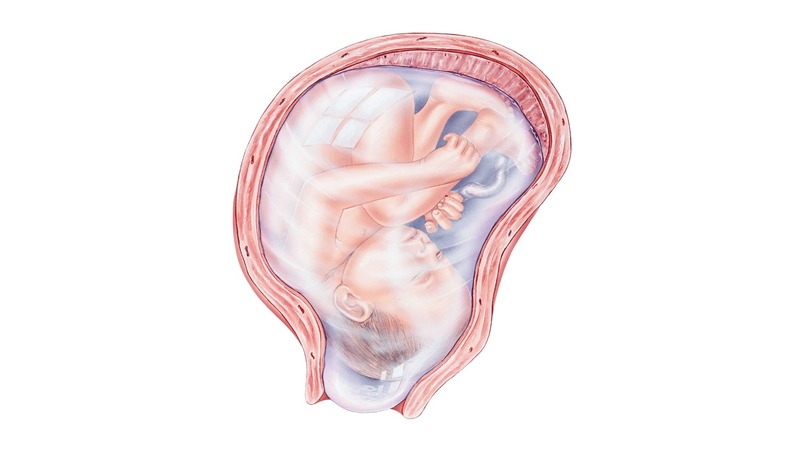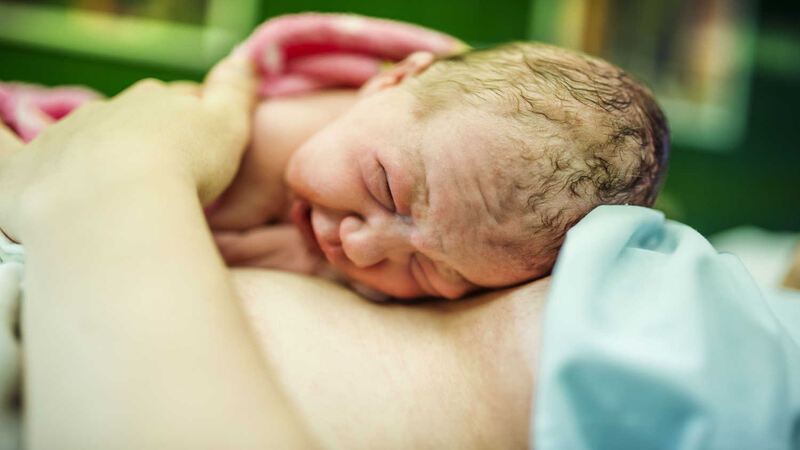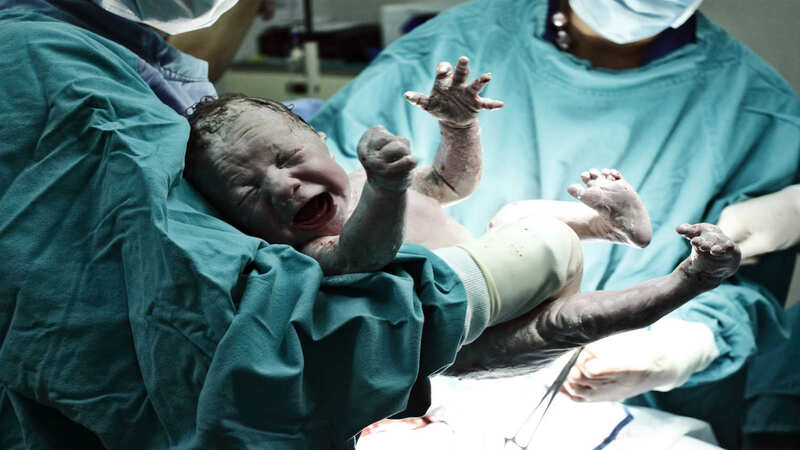
En caul birth is a very uncommon event involving the birth of a child inside the amniotic sac, which has not ruptured or broken during the delivery process. Instead of the usual experience of breaking the sac during labor, the baby is born in a fluid-filled amniotic sac. This unique phenomenon is also known as “veiled birth”. It has fascinated people for centuries, often associated with good luck or supernatural powers.
En caul births are extremely rare, occurring in less than 1 in 80,000 live births (1). The babies born in this way are usually healthy and develop normally, just like babies born through a typical vaginal delivery. However, there may be some rare complications associated with en caul birth, such as difficulty breathing or an increased risk of infection. Despite the rarity of en caul birth, it continues to capture the imagination and interest of many people. Here is everything you need to know about an en-caul birth.
What is En Caul Birth?
En caul birth, also known as a “veiled birth,” is the birth of a child that happens along with the amniotic sac, a fluid-filled membrane that surrounds and protects the fetus during pregnancy.
In the course of a conventional vaginal delivery, the amniotic sac ruptures and discharges the fluid, commonly known as water breaking. However, in an en-caul birth, the baby is born with the sac intact. It may appear encased in a transparent or translucent bubble.
En caul births are very uncommon and are more likely to occur in premature births or multiple births, such as twins or triplets. En caul births are usually harmless and don’t require any special medical intervention. However, doctors may need to puncture or remove the sac if it is preventing the baby from breathing or if there are concerns about the baby’s health.
[Read: Water Breaking During Pregnancy]
Causes of an En Caul Birth

The exact cause of en caul birth is not fully understood. Normally, the amniotic sac breaks during labor, allowing the baby to move through the birth canal and be born. However, in rare cases, the sac remains intact until the baby is born, resulting in an en caul birth. It could occur because of the delayed rupture of the amniotic sac.
En caul births are more likely to occur in premature babies (2). The skin of a premature baby is thinner, and the amniotic sac may not have had time to rupture before birth. Multiple pregnancies, such as twins or triplets, may also increase the likelihood of an en caul birth, as there may be less room in the uterus for the sac to break.
En caul births are generally not associated with any underlying health problems or complications, and most babies born in this way are healthy and thrive. However, as with any birth, there is always a risk of complications. You must consider talking to your doctor if you have any concerns.
Difference Between Caul Birth and En Caul Birth
Caul birth and en caul birth are related but have different meanings. A caul birth is when a baby is born with a portion of the amniotic sac or membrane covering their head or face. This is also known as a “veil birth.” In this case, the amniotic sac has ruptured, but a piece of it remains attached to the baby’s head or face.
On the other hand, an en caul birth is when the entire baby is born still inside the amniotic sac, which has not ruptured. The baby may appear to be encased in a transparent or translucent bubble. This is a much rarer occurrence than caul birth.
So, the main difference between the two is the extent of the amniotic sac’s presence during birth. In a caul birth, there is a piece of the sac remaining attached to the baby, while in an en caul birth, the entire baby is born within the sac.
Benefits of an En Caul Birth

There are no known specific benefits to an en caul birth, and it is generally considered to be a rare and unique occurrence without any significant medical implications. However, some people believe that an en caul birth can be a sign of good luck or have symbolic significance.
For the baby, being born en caul does not appear to have any significant medical or developmental advantages. However, it is worth noting that in some rare cases, the amniotic sac may provide an extra layer of protection to the baby during birth, especially if there are any complications or difficulties during delivery.
In general, an en caul birth is not associated with any particular health benefits or risks. It is a rare and interesting phenomenon that is mostly a matter of curiosity and interest.
Should You Have a C-Section For an En Caul Birth?
In general, an en caul birth is not a reason to perform a cesarean section (C-section). Most en caul births occur naturally, without any complications, and do not require any special medical intervention. Therefore, unless there is a medical reason for a C-section, such as a risk to the mother’s or baby’s health, a C-section is usually not necessary or recommended for an en caul birth.
However, if there are concerns about the baby’s health, such as if the sac is preventing the baby from breathing, doctors may need to puncture or remove the sac, and in some rare cases, a C-section may be necessary. Additionally, if a woman has a medical condition that makes vaginal delivery unsafe or impossible, a planned C-section may be the safest option regardless of the type of birth.
Ultimately, you should ask your doctor about whether to have a C-section for an en caul birth. They might want to consider your and your baby’s health before the decision.
[Read : Emergency C-Sections]
What Happens After the Baby Born in an Amniotic Sac?

After an en caul birth, the medical team will typically check the baby’s vital signs and assess their overall health. If the baby is breathing and appears healthy, doctors will place the baby on the mother’s chest for skin-to-skin contact. In rare cases, your baby may require medical intervention if they are not breathing or have other complications.
After an en-caul birth, the placenta will be delivered. At this point, the mother may experience some bleeding and discomfort as her uterus contracts and returns to its pre-pregnancy size. Doctors will monitor her closely for any signs of postpartum complications, such as excessive bleeding or infection.
Overall, the care and recovery process after an en caul birth is similar to that of a typical vaginal delivery, along with regular check-ups and support provided to ensure the health and well-being of both mother and baby.
En caul birth is a natural phenomenon that occurs very rarely. In some cases of en caul birth, medical emergencies can occur. But En caul birth can’t be a reason for a cesarean (C-section). After en caul birth, monitoring the baby’s vitality is essential.
FAQ’s
1. How Long Can A Baby Survive in a Caul?
A caul or an amniotic sac protects the baby until the process of birth. However, the sac ruptures before birth, allowing the baby to pass through the birth canal. In an en-caul birth, babies are born along with the amniotic sac. A baby can survive for about 25 minutes in a caul after birth.
Read Also: Postpartum Infection And Complications Overview
Reference
- Malik R, Sarfraz A, Faroqui R, Onyebeke W, Wanerman J. Extremely Preterm (23 Weeks) Vaginal Cephalic Delivery En Caul and Subsequent Postpartum Intraventricular Hemorrhage and Respiratory Distress: A Teaching Case. Case Rep Obstet Gynecol. 2018 Apr 30;2018:5690125 – https://pmc.ncbi.nlm.nih.gov/articles/PMC5952438/
- Anisur Rahman, Akash Das, Priscilla Mary, Sheik Haja Sherief, Sivakumar T3, Pharm D. Interns, Department of Pharmacy Practice, Nandha College of Pharmacy, Erode, Tamilnadu, Department of Pharmacy Practice, Nandha College of Pharmacy, Erode, Tamilnadu. Principal, Nandha College of Pharmacy, Erode, Tamil Nadu – https://www.ijrrjournal.com/IJRR_Vol.7_Issue.11_Nov2020/IJRR003.pdf
